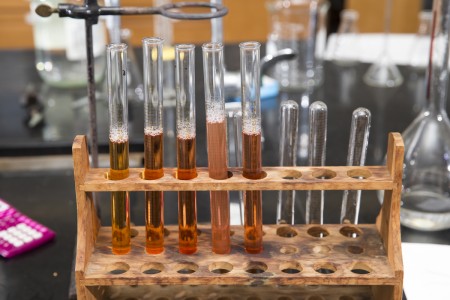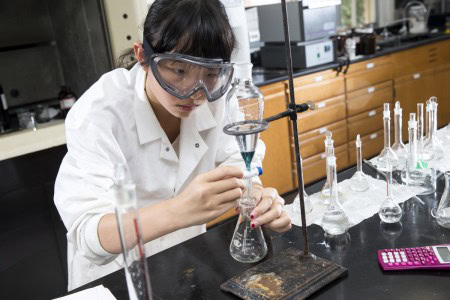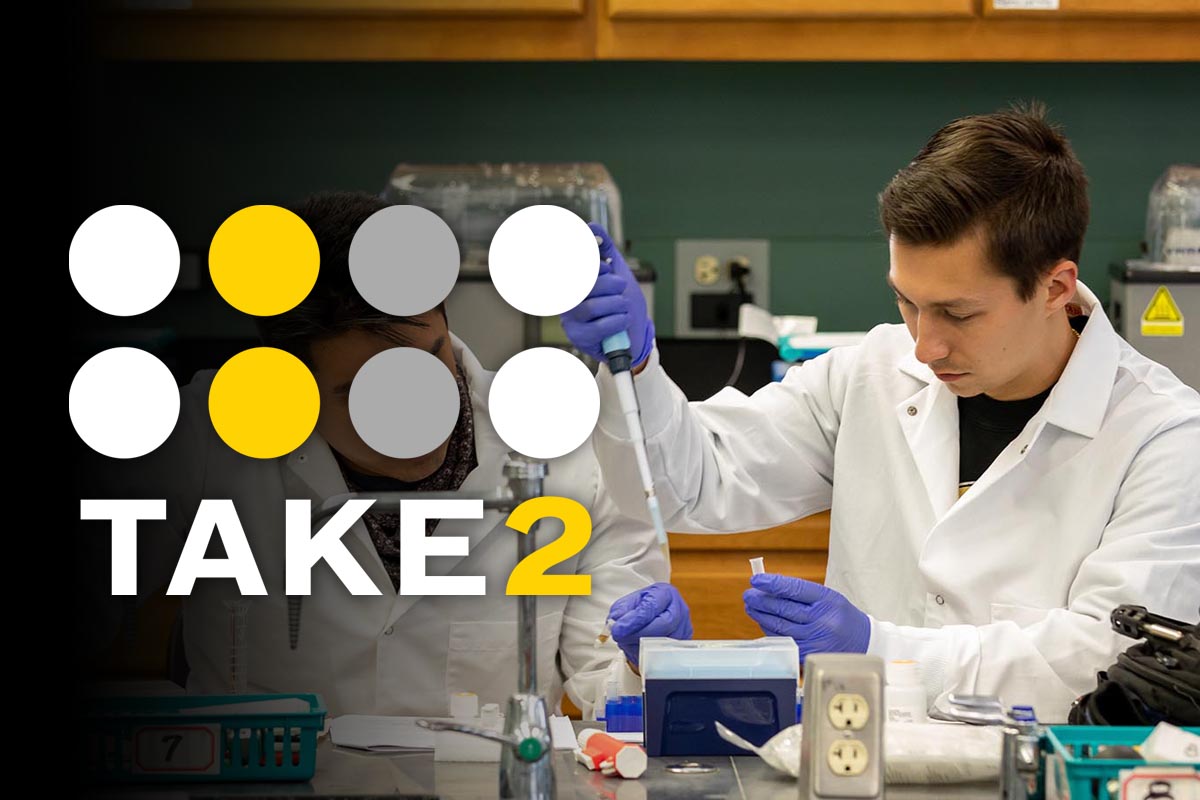Student looks for leads in Summer Research

Chemistry professor Bill Bare looks at colored solutions prepared by Di Bei ‘18 that may be used to test water contamination levels.
During her first year at Randolph, Di Bei ’18 performed as a flutist in the College’s Chamber Orchestra and completed a shadowing program with doctors at a local hospital—all while taking a full academic load. She’s spending her summer conducting advanced level chemistry experiments for her Summer Research project.
Bei and chemistry professor Bill Bare are working on new methods to detect and measure lead concentrations in liquid solutions. Bare said they already have an instrument that allows them to make those readings; however, some of their samples have concentration levels below its measuring capability.
“Di and I are trying to find some ways that we can lower our detection level so that we can use our instrument or a new method that Di is working on to measure drinking water samples and things like that,” said Bare.

Di Bei ‘18 is developing new techniques for testing levels of different contaminants in environmental samples.
The aforementioned new method combines the old practice of wet chemistry–taking samples to a lab and mixing them with different solutions–with the use of micelles (clusters of molecules in a colloidal solution) to test her samples. Bare said old-fashioned wet chemistry, like one might see in a science fiction movie, is a much more time consuming and expensive method than using the modern tools available today.
The use of micelles in these kinds of experiments is one of the biggest innovations in wet chemistry and chemical analysis since the 1960s, according to Bare. Bei’s next experiment will involve looking at color changes in her samples, which indicate different lead concentration levels. She hopes to do even more hands-on research such as this project in the future.
Bei’s methods for detecting low levels of lead concentration in water could benefit physics professor Sarah Sojka, who is researching a system that would use recycled rainwater for irrigation purposes and drinking water. It could also help other students conducting future water testing projects.
Bei’s favorite aspect of the project has been the opportunity to replicate experiments by other scientists and expand upon their work.

Di Bei ‘18 is developing new techniques for testing levels of different contaminants in environmental samples.
“A lot of times in class the teacher will give us instructions and we’ll just follow them, but this project is different,” she said. “I get to read other people’s papers and try their experiments on my own.”
The biology and chemistry double major from Beijing, China, said conducting these wet chemistry experiments is similar to following recipes in a kitchen. If the instructions aren’t followed, sometimes the experiments don’t turn out exactly as planned, and in several cases Bei has found ways to make them work even better.
Bei plans to attend medical school after completing her undergraduate studies at Randolph.
“As far as being able to come in and go in the lab and work and get useful information out of it, she’s done a lot better than some students I’ve had who are juniors and seniors,” said Bare. “It’s been really nice to work with someone who is so responsible and thoughtful.”
Tags: Bill Bare, chemistry, Di Bei '18, summer research, Summer research 2015
